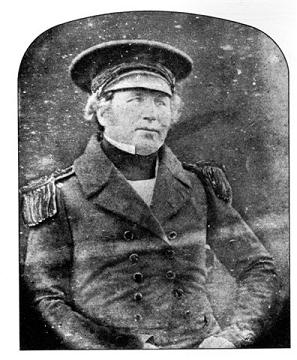By Melinda Creech
Graduate Assistant, Armstrong Browning Library
The Oceanic Steam Navigation Company, more commonly known as the White Star Line, was a prominent British shipping company. Founded in 1845, The White Star Line, operated a fleet of clipper ships that sailed between Britain, Australia, and America. The ill-fated Titanic was perhaps their most famous ship. The Armstrong Browning Library has a few connections to the Titanic. One connection relates to a set of postcards that disappeared with the Titanic and another relates to the author of the hymn, “Nearer, My God, to Thee,” the song that was purportedly playing as the Titanic sank. The Armstrong Browning Library’s collection includes a letter with the White Star logo in its heading and several letters written on board ships or while individuals were preparing to board ships. The letters, written between 1841 and 1912, are lines from people who were passengers on SS (Steamer Ships), RMS (Royal Mail Steamers), or HMS (Her Majesty’s Ship). It is interesting to note that one of the first purposes of steamers crossing the Atlantic was to deliver the mail. These lines, written from steamer ships, may shed some light on the adventure and danger presented by steamer travel in the late nineteenth century.
This post relates the story of another earlier steamer disaster. The remains of this wreck, HMS Terror, were found recently.
On September 12, 2016 the wreck of the HMS Terror was discovered in Terror Bay, King William Island, in the Canadian Arctic Archipelago.
The HMS Terror had began her career as a bomb vessel, engaged in the War of 1812. In fact, it was the vision of the HMS Terror bombarding Fort McHenry that inspired Francis Scott Key to write “The Star Spangled Banner.” In 1836, the ship was refurbished for exploration, making trips to the Arctic (1836) and to the Antarctic (1839). After her trip to the Antarctic, she was again refurbished at Woolwich for a trip to the Arctic through the Northwest Passage.

HMS Erebus and HMS Terror, the two ships used by Sir John Franklin on his 1845 ill-fated search for the Northwest Passage. The ships became trapped in ice at King William Sound (Victoria Strait) for three years, leading to the deaths of all 135 men.
The HMS Erebus and HMS Terror were the two ships used by Sir John Franklin (1786-1847) on his 1845 ill-fated search for the Northwest Passage. The ships became trapped in ice at King William Sound (Victoria Strait) for three years, leading to the deaths of all 135 men.
The HMS Terror set sail on 19 May 19 1845 but never returned. A message, dated 22 April 1848, and signed by Captains Francis Rawdon Moira Crozier (1796-1848) and James Fitzjames (1796-1848?), was found at Point Victory on Prince Regent Inlet stating that they were abandoning both the Terror and the Erebus.
Mystery enveloped the fate of the ship and her crew until the discovery last year. Visit the Royal Museum Greenwich to find out more about the discovery of the HMS Terror.
The Armstrong Browning Library has a fragment of a letter probably possibly written by Captain Crozier in 1842, shortly before he began his fateful voyage.
The letter states:My dear Sir Thomas,
Thanks for yours of 26th which I received this day on my return from Ireland. I was before perfectly satisfied, and believe me my confidence has not been in the least shaken by Commander Beadons test, and very strange…
…write him so soon as I get a little of my bustle over.
It is possible that Sir Thomas was Sir Thomas Hamilton, 9th Earl of Haddington, who was the First Lord of the Admiralty at the time. Commander Beadon was conducting tests of lifebuoys in February and March of 1842 (Transactions of the Society, Instituted at London, for the Encouragement of Arts, Manufactures, and Commerce Royal Society of Arts Great Britain, Vol 54 (1843), 121). However, part of the letter is missing.
There is another interesting inscription in pencil in another hand at the bottom of the page:
Capt. Crozier —who commanded the same ship as Sir John Franklin’s expedition & was lost with him in 1843-6 . My brother was lost with him.
This letter was found with other letters removed from an album of letters and autographs collected by Mr. Lewis R. Lucas. However, no one with the surname Lucas was found among the crew lists of either the Terror or the Erebus.
Mystery still shrouds the letter fragment. Who was Sir Thomas? Can we date the letter by Commander Beadon’s lifebuoy tests? What was very strange? What was Captain Crozier’s bustle? Who has the rest of the letter? Whose brother was lost in the expedition of the Terror?





